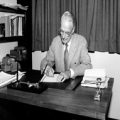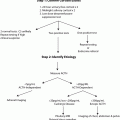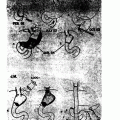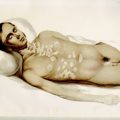Dr. Norman W. Thompson in one of his frequent teaching moments
Dr. Norman W. Thompson (NWT) is one of the most beloved figures in endocrine surgery . His examples of patient care, mentorship, devotion to his craft, and affable nature have influenced hundreds of surgeons and affected the lives of thousands of patients. He advanced the field through his scientific research and his organizational ability. He is among a small group that can be considered the founders of the specialty of endocrine surgery.
Academic Career
NWT graduated from Hope College (located in Holland, Michigan) in 1953; he has remained a loyal supporter since. He was a member of the board of trustees from 1973 to 1988, and was awarded a Distinguished Alumni Award in 2004. He and Marcia (Hope College, Class of 1956) have endowed a science laboratory and a scholarship at Hope College (Fig. 1). Following college, he went on to the School of Medicine at the University of Michigan , receiving his medical degree in 1957. Dr. Thompson was recruited to stay at the University first in 1957 as a trainee and then in 1962 as a faculty member. He spent his entire career in Ann Arbor, despite opportunities to take leadership positions elsewhere. He retired from active practice in 2002, becoming professor emeritus. An endowed professorship was established in his honor1.
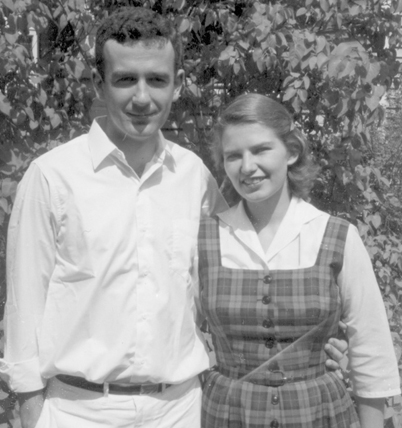

Fig. 1
Norman and Marcia during NWT’s internship at the University of Michigan (ca. 1957)
When NWT joined the faculty in 1962, endocrine surgery did not exist as a subspecialty of general surgery. Most hormones could not be easily measured in patients, and the imaging to identify tumors was rudimentary by current standards. His initial practice was broad, and his publications from his first decade of practice reflect his interests in general surgery, trauma, and vascular diseases. However, he was influenced by contact with faculty colleagues who were making important observations in patients with endocrine tumors, including Drs. Beierwaltes and Sisson (nuclear medicine/thyroidology), Nishiyama (pathology), Schteingart (endocrinology/adrenal), and Vinik (endocrinology/pancreas). These collaborations placed him at the center of a large group that made routine the precise measurement and interpretation of hormone levels, and developed the imaging tests needed to identify the tumors. As his experience and fascination with these tumors grew, his endocrine surgery practice squeezed out his other clinical and academic interests. He became devoted to the nascent field.
Clinical and Scientific Contributions
NWT made many of the initial observations that underpin the field of endocrine surgery as we now know it. He had a very broad endocrine surgery practice, a keen set of observational skills, and an uncanny memory for patient situations. He practiced the full spectrum of endocrine surgery , including thyroid, parathyroid, pancreas, and adrenal tumors, as well as tumors of the diffuse neuroendocrine system. His position in Ann Arbor, where the first metaiodobenzylguanidine (MIBG) scans were performed, gave him a vast experience with pheochromocytoma, one of the areas to which he made many contributions [1]. He went on to describe novel presentation of pheochromocytomas, methods for perioperative preparation, and operative techniques.
Similarly, he took his personal observations of a very rare disease (gastrinoma causing Zollinger–Ellison syndrome) and was among the first to determine the cause of the large proportion of patients with no apparent primary tumor. He identified that many patients had small primary tumors in the duodenal wall, often much smaller than the metastatic disease that was also often present in lymph nodes [2]. This observation explained many of the confusing concepts that investigators in this area struggled with at the time, such as whether gastrinoma could commonly be primary in lymph nodes. In related work, he developed a standard approach to the pancreatic tumors associated with the multiple endocrine neoplasia type 1 syndrome. This included a subtotal pancreatectomy and removal of the duodenal disease that he had described; this procedure became known as the Thompson operation [3] .
Stay updated, free articles. Join our Telegram channel

Full access? Get Clinical Tree



